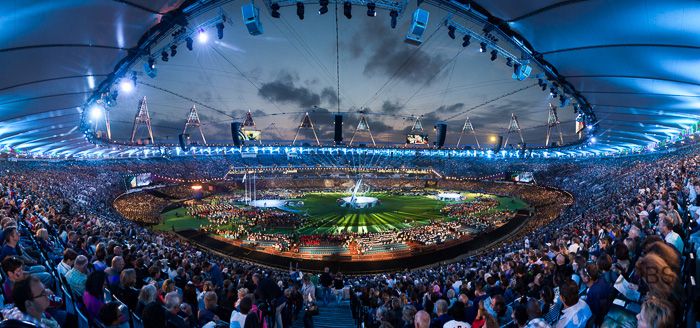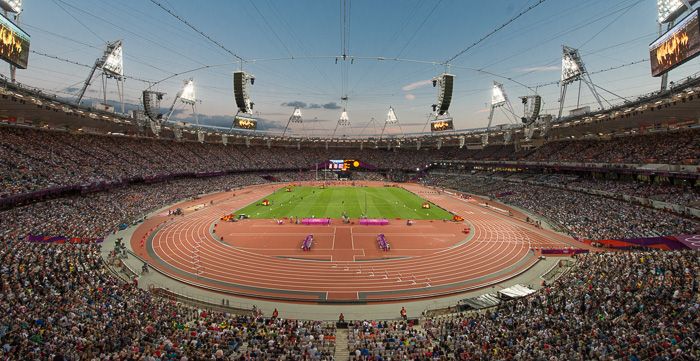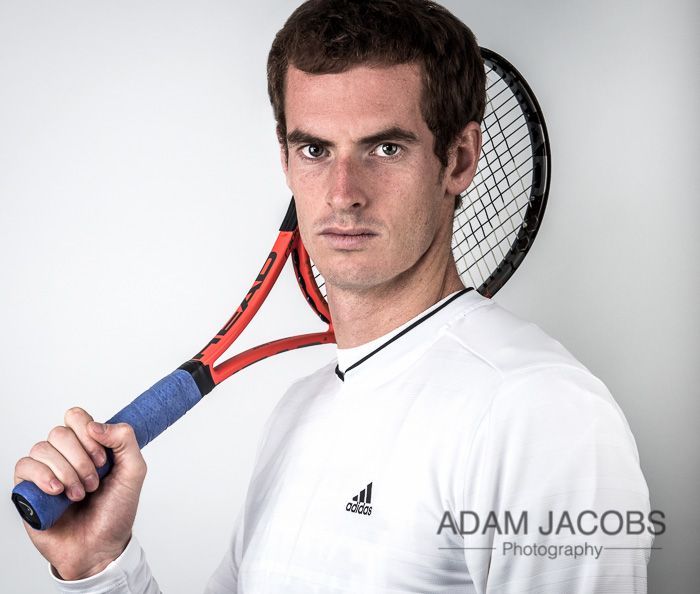Adam Jacobs has an eclectic mix photography in his portfolio. From sports shots to images of abandoned buildings, his work has something for everyone. We asked him to answer a few questions for our readers.
1. You had an interesting start to photography. Explain how a migraine condition led to your career.

Unfortunately, I was diagnosed with a relatively rare condition Postural Orthostatic Tachycardia Syndrome (POTS) at the age of nineteen during my studies at the University of Nottingham and University of Melbourne. This resulted in severe chronic migraines which confined me to a dark room unable to withstand any noise or light and spending most of my time in and out of hospitals for almost two years.
After making very little medical progress in London, I travelled to Ann Arbor, Michigan to seek alternative medical treatment in a world famous clinic designed for people who suffer with my condition. As my condition began to improve, I was gradually able to go on short walks, travel to coffee shops and do other small activities, which had previously been unimaginable due to my high pain levels and sensitivities to light and sound.
As a distraction from my pain, I took my first SLR camera- a Nikon D40- with me everywhere I went and began taking shots to focus my mind away from my migraines.
Ann Arbor is a collegiate town and home to the largest stadium in America. Being a sports fanatic, I wandered into the stadium one day after being discharged from hospital to take some photographs for fun. Upon taking them to be developed in a small, antiquated photography store in rural Michigan, to my disbelief, the lady behind the counter enquired as to whether I was a professional photographer. She was fascinated by my story and in particular by one of the pictures I had taken of Michigan Stadium where the angle of the sun illuminated the empty bleachers with a spectacular golden hue, which, after a little touching up, made for a beautiful panoramic shot.

She put me in touch with the University of Michigan Athletics department who were very keen on my work and subsequently asked me to create their annual schedule poster, which has a run in the hundreds of thousands and is distributed to all living alumni.

This sparked my photography career, which began with shooting primarily sporting images, and has thankfully grown from strength to strength taking me to some wonderful places and allowing me the opportunity to meet and photograph some inspiring and influential people including presidents, rock stars and world class athletes.
2. Do you have a favorite photo?

This photograph is one of my favorites of my sporting images taken lying on the floor at the coin toss between Michigan and Ohio State in front of a packed stadium of more than 113,000 people.

This image of Derek Jeter was used by ESPN on their front page showing the highlights of his career and demonstrates the access I have been lucky enough to get whether out in the field or in studio to some of the world’s greatest athletes, film stars and politicians”.

This photograph represents a seminal moment in US Soccer history which I was lucky enough to capture at the 2010 FIFA World Cup as one of the photographers for the US Soccer Team.

This image captured an intimate moment between two of the greatest political figures of the 21st century in Nelson Mandela’s office…need I say more.

This photograph was taken on assignment for a charity 1GOAL for whom Sir Mick Jagger is an ambassador. The charities aim was to provide education to millions of Africans who couldn’t afford to go to school.
3. You took some shots at the 2012 Olympics. Tell us about that experience and please share and describe at least two of your favorite pictures from the event.
The Olympics and Paralympics were both phenomenal experiences to be a part of, not only because of the wealth of photographic opportunities, but also because of how London and its people quite literally ‘came alive’ for the few weeks during the Games. Strangers interacted on the Tube, people greeted each other with warm smiles and the jubilant spirit of the volunteers was infectious; indeed, the magic of the Games spread joy and happiness throughout my hometown which made the long days (often in excess of sixteen hours between multiple venues) fly by.
I was extremely fortunate to photograph for brands including Nielsen, Visa, Arcelor Mittal and McCann Erikson meaning that I was provided with unparalleled access to many events around the village including aquatics, athletics and gymnastics. This granted me the opportunity to capture much of the action as well as shoot panoramas of the sporting venues. Below are a couple of my favorites, which provide three very different perspectives of the main Olympic Stadium.

The first is a panorama taken during the closing ceremony of the Paralympics. The photograph was shot during Coldplay’s set and is a composite stitch of multiple photographs. I particularly love the way that the stadium is bathed in blue light at dusk which contrasts strongly with the green turf and I hope the photograph provides the viewer with an immersive view of what it was like to be there on the day.

The second is also of the Olympic Stadium during one of the evening athletics events where the atmosphere at the Games was perhaps at its most electric. I was particularly keen to find a vantage point that allowed me to capture the entirety of the stadium, the iconic floodlights and show the Olympic flame. I particularly like how you can see the torch on each one of the scoreboards around the arena which helps contextualize the photograph.

The third gives you an idea of how close we, as photographers, are able to get to the action at events such as this and other major sporting events. I have photographed including the FIFA World Cup and The America’s Cup; fortunately we frequently, quite literally, have the best seat in the house!

Moreover, many people don’t realize that the Games are also about much more than just the sport. With diplomats and VIPs flying in from all around the world, there are a lot of other activities and events going on. I was fortunate enough to be asked to photograph Michelle Obama meeting Team USA and inspiring them with some words. An opportunity like this rarely come along and below is one of my favorite shots of the First Lady from that morning.
4. Few photographers take shots of abandoned spaces. Why do you do it?
Like many urban explorers, I find abandoned spaces fascinating and intriguing; on entering a space I usually never know what I am going to find (a boat on the seventh floor of a hospital for example!) despite heavy research and find the spaces both culturally interesting and rich in subject matter for the photographer.
Finding the beauty in decay is both fun and challenging and through my images, I hope to show people spaces that they would usually never see and make them contemplate the permanence of things in our fast-paced society. These ruined spaces, whether factories, hospitals, schools, churches to name a few, are both evocative and eerie in equal measure as one can still can see and feel the remains of their past whether it’s through seeing the opulence of a crumbling architectural facade or experiencing the vast emptiness of a space that once brimmed with energy and bustle. Indeed, as a Geography graduate, I love reading up on the cultural significance of these places before photographing them and understanding the full extent of why and how they have fallen into a state of disrepair.
Essentially, all of these abandoned spaces are temporary and fragile sites; a result of a change of eras and the inevitable passing of time and circumstance. Often, I return to spaces to see that things have changed, been destroyed or completely disappeared from a previous visit. Thus, I feel that it is important that these spaces, landmarks of history frozen in time, are not forgotten and should be documented. If I can do that in an artistic manner and in a way that makes people want to view them and explore and appreciate their dilapidated facades, all the better.
5. Please share a picture of an abandoned space that you’ve taken and tell us the story behind it.
The attached photograph “Assembly Line” is one of my favorites, not only for it’s aesthetic but also as it was one of the first times I explored an abandoned space with a camera.

It was taken in The Packard Plant in Detroit, formerly one of the busiest and productive car factories in America. The plant closed in 1958, like so many in the Mid-West of America during the mid-twentieth century, when manufacturing moved abroad due to cheaper labor costs. This left its huge array of sprawling buildings in a state of disrepair and open to scrappers and urban explorers. At the time the various ruins were relatively easy to access although now it is all boarded up and much harder to get into.
This particular space was one of the main assembly lines where engines were manufactured between 1903 and 1958. I had visited this space earlier in the week but returned after a heavy rainstorm to capture the space with reflections to make the space appear larger, immersive and more interesting. Graffiti and the after-effects of people using the space as a paintballing venue produce the vibrant colors you see; in fact the remains of the paint balls can be seen on the floor of the image. I enhanced these colors by taking multiple shots and compositing various elements of the frame on top of one another, as I like my photographs to be big, bright and bold.
This is because as a chronic migraineour I perceive sound, light and color in a more sensitive manner than the normal person and often refer to how my photography is a window into my migrainous world. I feel this piece embodies these sensitivities and creates a visible symbol of how such structures can still be seen as beautiful.
This shot, also inspired by “Abandoned Spaces” series, is constantly growing as part of a larger fine-art portfolio, and fortunately, has been sold in galleries worldwide and into private collections including the Sir Elton John Photography Collection.
6. As a younger photographer, what do you see for the future of the industry? What will new photographers need to do to prepare?
This is a tough question as with new technologies and a rapidly changing market, I see photographers’ as constant chameleons continually having to adapt, change and up our games. I’m not even 30 yet and am excited to see where the industry goes and what opportunities present themselves in the next 30 years. All I know, is that I will need to be ready to transform and keep right up to date with the demands of clients to ensure I continue to work with the caliber of clients and be assigned the type of projects that I have been thus far.
I’ve been shooting professionally for almost ten years now and have already seen vast changes in the industry. Obviously, over the past few years there has been a big shift towards moving imagery as well as just the stills with many clients expecting photographers to be able to provide both services. Mirrorless cameras may also play a big role over the next couple of years. Further, there is a growing need for clients to use and employ photographers specifically to shoot images for use on social media channels given their reach rather than rely solely on traditional advertising channels. This was apparent to me when I was one of the official photographers for the Queen’s Jubilee celebrations where increasingly clients demanded imagery specifically for online consumption rather than across traditional usage. I can only see this continue to grow as traditional media decreases and more and more imagery goes onto the web and mobile.
I always advise new, aspiring photographers to assist as much as they can; learning in the field is invaluable. Also, the web is an amazing resource to learn photography skills and techniques as well as the more logistical sides of thing such as marketing and the technicalities of running a successful photography business. Marketing, especially through social media is essential and now a fundamental part of running a successful photography business. You can take the most stunning photographs but, if no one ever sees them, you will never get to where you want to be. I also unlike many traditionalists would say shoot what you enjoy and don’t necessarily feel a need to pigeonhole yourself to one genre. I have found through my career that the skills I acquired through originally starting out as a sports photographer have definitely helped me as I have diversified and successfully moved into the commercial sphere working across different photographic genres and with different brands.
7. Share an image that you’ve taken this year that you’re proud of. Explain why it’s a favorite.

Throughout this last year, I’ve been fortunate enough to be asked to shoot an eclectic range assignments for clients including Natwest, M & C Saatchi, Wagamama, Moss Bros as well as working on personal projects so it’s difficult to pick one particular image as a stand out favorite. However, away from my commercial work I do like the below image which also makes up part of my fine-art “Abandoned Spaces” series. It was taken in a derelict school in America.
I enjoy imbuing my work with some irony and humor and this piece contains obvious irony; I like how the usually lighthearted catchphrase “School’s Out Forever” is hauntingly accurate here as it looms above the disused chairs and fragments of old textbooks. The school was an amazing space to explore with hoards of used supplies and notepads lying as a reminder as the site’s former past. Many of these can be seen on the floor of the shot.
For me, photography is all about experiences and often my favorite shots relate to how I feel when taking the particular photograph. In this instance, having been to a school myself, like the vast majority of citizens in the world, I felt an uncanny sense of familiarity but also unease as I wandered its corridors, classrooms and assembly halls and could smell the rotting stench of putrid paper in the summer’s heat. Standing staring at the chalkboard in the eerily quiet classroom, previously a site for learning and discovery, powerfully reminded me that all sites are in flux and that time presides over all. I feel this image captures this combination of powerful emotions that I felt at the time, which I hope translates to the viewer.
8. What’s in your gear kit?
I shoot primarily using Nikon with two main bodies: the D800 and D4. I also have numerous Nikon lenses and have listed the ones I use most regularly below:
Nikon 24-70 2.8
Nikon 70-200 2.8
Nikon 14-24 2.8
Nikon 50mm 1.4
Nikon 105mm
In terms of supports, I have two carbon fiber Manfrotto and Gitzo tripods that I regularly use with a variety of different hydrostatic ball heads. I also frequently use specialty panoramic heads for specific projects such as this photograph taken from the rooftop of Buckingham Palace where the ability to maintain my camera along specific planes of angle and focus comes in extremely handy.

I also carry a small GoPro for time lapses which often comes in useful as well as a variety of filters. In the studio, I currently use Bowens strobes and on location I either take them or a variety of Nikon speedlights if I wish to travel lighter and be slightly more versatile if I don’t have the luxury of having some helping hands with assistants. For example, the below shot of last years Wimbledon champion Andy Murray was taken using a variety of Bowens lights sitting on Manfrotto supports using a number of portable and lightweight softboxes.

In the studio, I also have the usual selection of heavy duty Manfrotto stands, supports, booms and product tables which serve me well as well a whole host of modifiers including umbrellas, octas, strips, snoots, reflectors, grids and so forth.
When travelling or going on larger assignments|, all of my cameras and lenses, along with my 15” Macbook pro for tethering and editing, is usually carried in a Manfrotto rolling bag. This roller bag is just the right size to meet airline regulations for carry on, has plenty of interior space and is perfectly customizable to whatever you want to put in there.
I also like the versatility of smaller bags for when I don’t want to carry around a large wheelie. In these instances, I’ll pull out my Manfrotto backpack or sling bag, both of which provide me with far more portability and versatility when roaming around. This ensures that I have easy access to my kit and ensure I never miss the shot.
Learn more about Adam Jacobs and his work on his website and follow him on Facebook.








